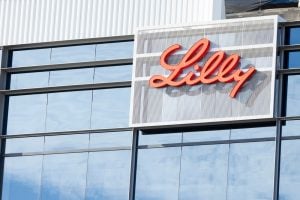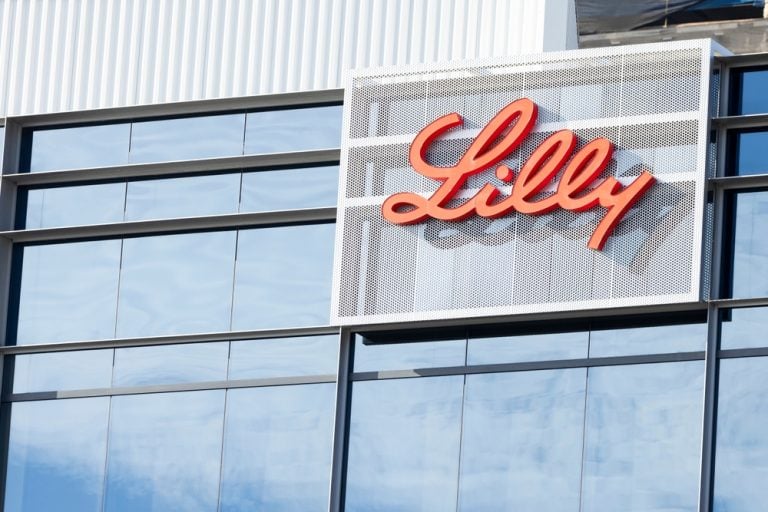In drug development there’s a narrow window to get to market and long delays tend to be fatal – and not just for the patients.
Ten years ago, Pharmaxis was confident of US Food and Drug Administration approval for its cystic fibrosis treatment, Bronchitol.
An inhaled dry mannitol powder, Bronchitol has been approved in Europe, Australia, Brazil, South Korea and even Russia.
In 2013, the agency demanded another trial and the therapy was not approved until November 2020 and the pandemic had struck.
Pending shareholder approval next month, Pharmaxis will be reborn as Syntara, and already has disposed of its mannitol business – Bronchitol and the asthma diagnostic Aridol – to focus on its clinical stage blood-cancer programs.
In a deal sealed last week, the loss-making mannitol arm has been acquired by Arna Pharma, which plans to build a new facility at an existing site at Eastern Creek in western Sydney.
Pharmaxis chief Gary Phillips says US partner Chiesi spent $US30 million getting Bronchitol through Phase 3 trials and regulatory approval.
“It was always thought the US would be the thing that turned the venture profitable and then we could have sold the asset at considerable value,” Phillips says.
But during Covid no cystic fibrosis patient would go anywhere near a hospital, while new drugs were chipping away at the addressable market.
“The delay was a killer,” he says.
“We realised sales would not get the numbers we and Chiesi expected, and in five years’ time the asset would not be worth any more than it is now.”
Pharmaxis had been losing money on the mannitol business for the last five years – and that made the decision to shrink the company a no-brainer.
Phillips adds that more than 10,000 patients are using the product globally.
Pharmaxis: prince of the pivot
While the deal is heralded as company-transforming, Pharmaxis had already changed its spots over the years.
Pharmaxis listed on the ASX in 2006, raising $25 million at 50 cents a share. A secondary listing on the Nasdaq was abandoned in 2009 for cost reasons.
Pharmaxis partnered with the Italian-based Chiesi, which holds the US rights and bore all clinical and most regulatory costs.
In 2019, long-time German partner Boehringer Ingelheim handed back the rights to a non-mannitol drug PXS4728A for the liver disease non-alcoholic steato-hepatitis (NASH or fatty liver disease) – but not before generating $83 million of milestone payments for Pharmaxis.
Last year Parkinson’s UK extended a grant of up to $5 million for a clinical trial (see below).
Arna you gonna sign?
The mannitol deal sees Arna Pharma acquire the global rights to the mannitol products, as well as the Pharmaxis name and all relevant equipment.
The acquisition price? $0.00.
In May next year Pharmaxis will vacate its 7,000 square metre HQ and manufacturing facility in the northern Sydney suburb of Frenchs Forest and move to smaller digs.
The company will reduce its workforce from around 70 to 25 people, with the new Arna Pharma facility expected to provide “opportunities” for at least some of them.
The company estimates exit costs at less than $1 million.
Still on a ‘honey I shrunk the company’ theme, the board has been reduced in size, with long-term chairman Malcolm McComas retiring and another director, Dr Neil Graham, also departing.
Phillips says the Mexit will cut the company’s fixed costs by 60 per cent, or $14 million.
While Pharmaxis does not get an immediate cent from the deal, the company is entitled to high single-digit royalties on net profits from mannitol sales.
The company is also entitled to a single-digit cut of profits on sales of Arna Pharma’s other products made at the facility.
The overall rationale of the deal is that the business was worth more to a party that could produce it at much lower cost – and Arna Pharma’s mega facility is expected to do just that.
Syntara is not a new car model
So where does that leave the slimmed-down Pharmaxis – er – Syntara?
“The new company is designed to be a small agile group of 20 to 25 people to take the pipeline we have developed through to the clinic and into patients,” Phillips says.
In short, Syntara will be all about furthering Pharmaxis’s core amine oxidase chemistry, the basis of several enzymes involved in inflammation and fibrosis.
The company’s target is pan-lysyl oxidase (LOX), an enzyme closely implicated in inflammation and fibrosis.
The company’s lead program tackles the rare blood cancer myelofibrosis.
The company’s compound comes in three iterations: PXS-4728 (for Parkinson’s disease), PXS-6302 (scarring) and PXS-5505 (myelofibrosis and hepatocellular carcinomas).
Tackling myelofibrosis
Phillips says investors are especially happy the company is focusing on myelofibrosis, a scarring of the bone marrow that interrupts the normal production of white and red blood cells and platelets.
The condition is especially topical because the US Food and Drug Administration last month approved Glaxosmithkline’s Ojjaara (Cytopia’s CYT387), first developed by Prof Andrew Wilks and his team at Melbourne’s Ludwig Institute for Cancer Research.
Phillips notes there have been several transactions for myelofibrosis assets in the past couple of years, worth more than $1 billion.
Globally there are about half a million sufferers, generally aged between 50 and 80 with an average five-year life expectancy.
Currently, myelofibrosis is treated by a class of drugs called JAK (Janus kinase) inhibitors that provide symptomatic relief but do not ameliorate the disease. They also cause unpleasant side effects.
Granted orphan drug status by the FDA in in 2020, PXS-5505 targets the matrix [inflammation] formation in the bone marrow and thus modifies the disease.
“Our drug does something about the underlying disease, so we have quite a different approach,” Phillips says.
In a previous Phase 1c/2 study, five of nine evaluable patients showed fibrosis improvement six months after treatment.
The company is now saddling up for a Phase 2 trial, in combination with a JAK inhibitor.
The 15-patient study is expected to kick off before the end of 2023, with interim results by the end of 2024.
Parkinson’s precursor a good show
Pharmaxis’s other compound PXS-4728 targets a precursor condition called idiopathic rapid eye movement sleep behavior disorder (IRBD).
IRBD sufferers thrash about and cry out in their sleep as they live out their dreams.
The disorder can precede motor cognition dysfunction by up to 20 years, with 70 per cent of sufferers going on to develop neurogenerative diseases such as Parkinson’s.
PXS-4728 targets monoamine oxidase B (MAOB), which is elevated in Parkinson’s sufferers and results in lower dopamine levels that are a hallmark of the disease.
The problem with Parkinson’s is by the time IRBD is diagnosed, about 80 per cent of the dopaminergic neurons are gone.
The charity Parkinson’s UK is funding a Phase 2 trial, to the tune of up to $4.6 million.
“If we could stop IRBD we would reduce the number of Parkinson’s patients in UK by one third,” Phillips says.
In return for the moolah, Parkinson’s UK is entitled to royalties capped at four times its investment for neurological indications; and two times for other diseases.
h2>A burns scar cure? Woodn’t it be good?
The company is also targeting burns-related scarring, in an investigator-led trial league with Perth burns legend Prof Fiona Wood (who this week also joined the board of listed orthopaedic play Orthocell).
This one is all about using the company’s pan lox inhibitors to prevent scarring after burns surgery.
The Phase 1c, placebo-controlled study is expected to enrol the first of 60 patients by the end of 2023
“We are still working with Prof Wood and her team on the next topic study, which is likely to be in keloid or hypertrophic scars,” Phillips says.
Meanwhile, Pharmaxis is also exploring another haematological malignancy, myelodysplastic syndrome, which Phillips dubs as a high unmet need with a $3 billion-plus market opportunity.
Pending a successful Phase 1 effort, the company envisages a Phase 2 dose escalation and expansion trial.
Finances and performances
Phillips says the cost of maintaining its soon to be shuttered Frenchs Forest digs should not be underestimated.
“The FDA audits means that everything has to be Rolls Royce, you can’t cut corners.”
He adds the FDA also has to validate the financial software used – and it’s inevitably the expensive sort.
“Now we can go back to using [the off the shelf bookkeeping product] MYOB,” he says.
On a pro forma basis, last year’s cash expenses of $23 million would have fallen to $9 million. “More administrative savings are likely as we dig through the weeds,” Phillips says.
Pharmaxis reported cash of $9.2 million at June 30, 2023, with a $5.7 million federal Research and Development Tax Incentive yet to be banked.
Last year, the company sold an almost-forgotten asset – a Bronchitol delivery device called Orbital – for a very handy $7 million in cash.
Over the last 12 months, Pharmaxis shares have ranged between 8.0 cents (October last year) and 3.0 cents on several occasions, the latest one on October 5.
The stock rose 0.6 cents, or 18 per cent in reaction to the Arna Pharma deal.
Dr Boreham’s diagnosis:
In November 2007, Pharmaxis shares peaked at more than $4 and the company was worth close to $800 million – all on the back of Aridol and the yet-to-be approved Bronchitol.
How the worm turns!
As it turns out, the mannitol sales were disappointing virtually everywhere except Russia, where Bronchitol is on an essential medicines list and subsidised by the Kremlin.
A rival American drug costs $US250,000 per patient per year – a few too many roubles for the average Russian citizen.
While Pharmaxis received donuts in cash from the Arna Pharma deal, the news was well received by investors because the market had valued the mannitol business at zero, or close to it.
“We see multiple near-term catalysts across a strong and growing pipeline for a now smaller and more agile clinical-stage drug developer,” chimes broker Morgans.
Morgans values the stock at 17 cents apiece – implying a 385 per cent increment on the current price.
Having recently celebrated 10 years at the helm of Pharmaxis, Phillips said he could not have anticipated the company’s twists and turns – and obstacles faced along the way.
“You have to be resilient enough and around for long enough to be successful,” he says.
“Many biotechs go through decades of rumbling around and you just need that one thing to turn you from a nothing into something.”
Like Margaret Thatcher, he is not for turning.
“I’m a stayer – I have only worked for Novartis and Pharmaxis and I finish what I start,” he says.
“I would not have predicted being where we are now, but you deal with the cards you have.”
The views, information, or opinions expressed in the interviews in this article are solely those of the interviewees and do not represent the views of Stockhead. Stockhead does not provide, endorse or otherwise assume responsibility for any financial product advice contained in this article.
Disclosure: Dr Boreham is not a qualified medical practitioner and does not possess a doctorate of any sort. He deals with the cards he has – but why does he always get the jokers in the pack?
The post Dr Boreham’s Crucible: Investors have been holding their breath for Pharmaxis’ rebirth. Time to exhale? appeared first on Stockhead.





















+ There are no comments
Add yours